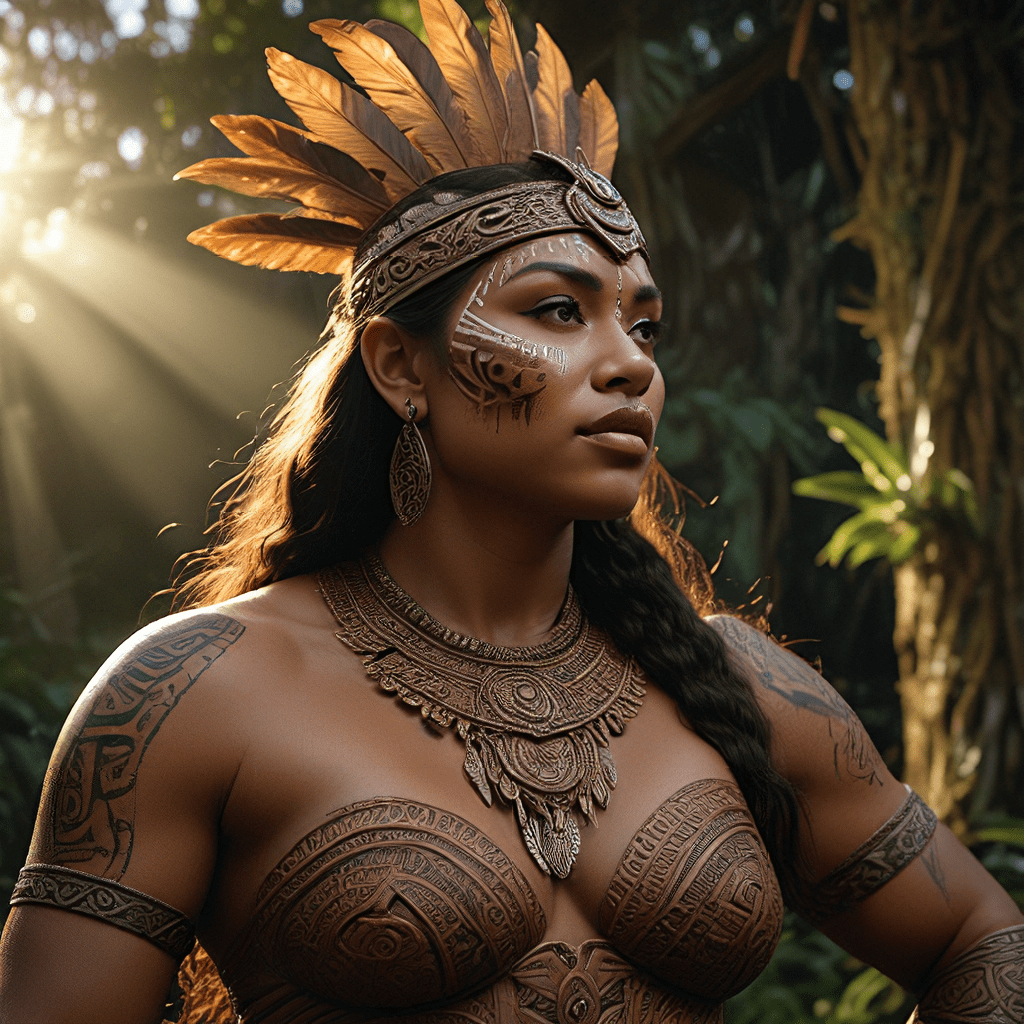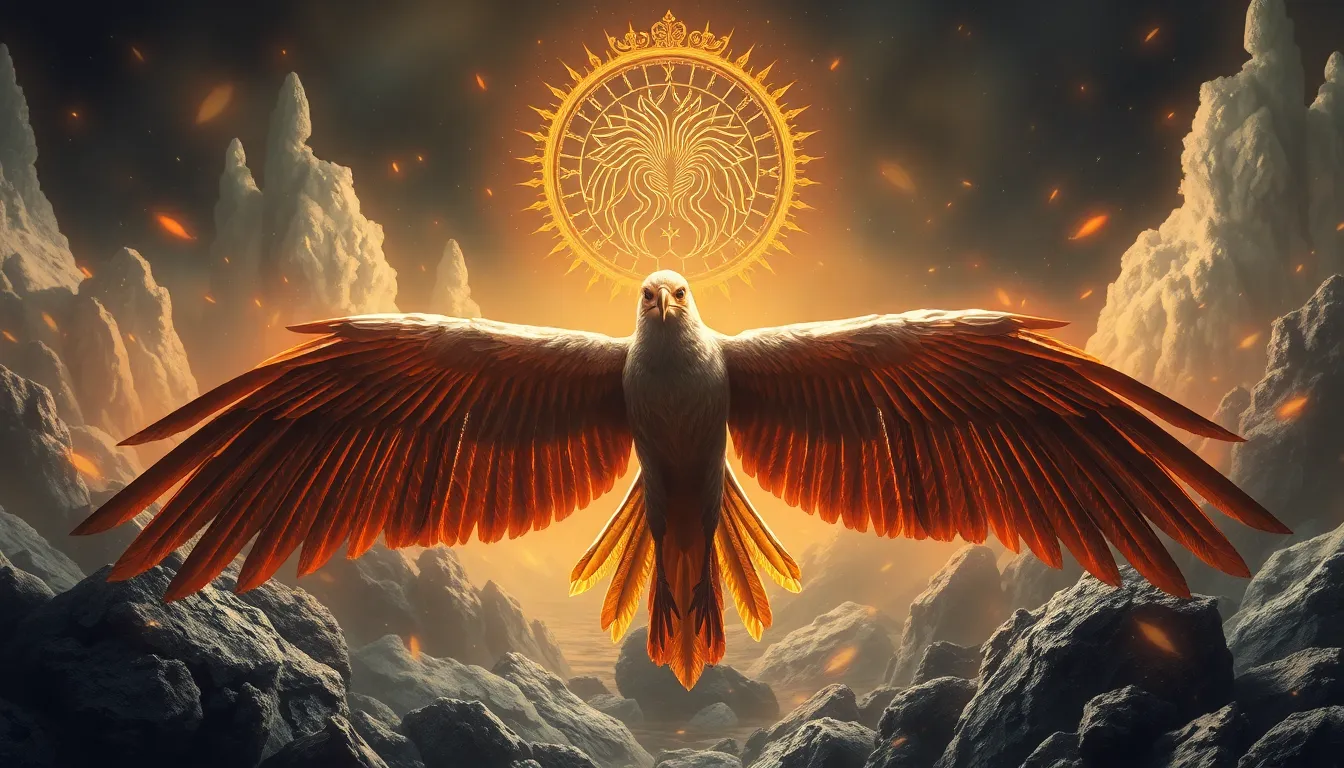Maori Myths: Where Light and Darkness Dance
Introduction: Understanding Maori Cosmology
Maori mythology is a rich tapestry of stories that weave together beliefs about the origins of the world, the nature of the universe, and the role of humanity within it. Unlike Western mythology, where light often symbolizes good and darkness represents evil, Maori myths present a more nuanced and complex relationship between these two forces. In the Maori worldview, light and darkness are not simply opposites but rather two integral aspects of existence, each with its own power and purpose. Understanding this interplay is key to unraveling the deeper meanings hidden within Maori narratives.
The Primal Duality: Rangi and Papa
At the heart of Maori cosmology lies the story of Rangi, the Sky Father, and Papa, the Earth Mother. These two primordial beings, eternally embraced, represented the universe in its initial state, a timeless darkness where light had not yet emerged. All creation, including the first humans, existed within their embrace. This primordial darkness, however, is not necessarily seen as negative. It represents a state of potentiality, a fertile void waiting to be given form and meaning.
The Separation of Heaven and Earth: Light and Darkness Emerge
The separation of Rangi and Papa, a pivotal event in Maori mythology, is the moment when light bursts forth into the world. This separation, brought about by their children, the gods, was a necessary act of creation. By breaking the embrace of darkness, the gods brought forth the sun, the moon, and the stars, lighting up the world and bringing forth life. The separation, however, also created the concept of distinct domains: the heavenly realm associated with light, knowledge, and order, and the earthbound realm, often associated with darkness, mystery, and the unknown.
The Role of Light: Creation, Life, and Knowledge
Light in Maori mythology is intrinsically linked to life, knowledge, and creation. The sun, a primary source of light, is often depicted as a powerful deity, providing warmth, energy, and the conditions necessary for plant growth and animal life. The sun's light also allows for the discovery and understanding of the world around us. Knowledge, wisdom, and the ability to see clearly are often associated with light. In many Maori stories, the acquisition of knowledge and enlightenment is symbolized by the journey from darkness into light.
The Role of Darkness: The Underworlds, Boundaries, and Taboo
While light brings forth life and knowledge, darkness in Maori myths is often associated with the unknown, the boundaries between the seen and unseen realms, and the realm of the ancestors. The underworld, known as Te Reinga, is shrouded in darkness, symbolizing the transition between life and death. The darkness of the night also serves as a reminder of the unseen forces that govern the universe, the mysteries that lie beyond human comprehension, and the power of the ancestors. Darkness often encompasses concepts of taboo, reminding individuals of the limits and boundaries within society, the consequences of breaking societal rules, and the importance of respecting ancestral traditions.
The Metaphorical Use of Light and Darkness: Moral Dilemmas and Social Structures
Light and darkness in Maori myths often serve as powerful metaphors for understanding moral dilemmas and social structures. The contrast between light and darkness can represent the struggle between good and evil, right and wrong, or even the tension between personal desires and societal expectations. In many stories, heroes or heroines strive to bring light to the world, defeating dark forces that threaten order and harmony.
For example, the story of Maui, a renowned trickster god, illustrates the interplay of light and darkness in navigating moral dilemmas. While known for his cleverness and bravery, Maui's actions often blur the line between good and bad. He is credited with bringing the sun and moon to the world, but his actions sometimes lead to unintended consequences. This complexity mirrors the human experience, where individuals often grapple with choices that have both positive and negative repercussions.
Similarly, darkness often represents the taboo, the unseen forces that guide social boundaries, and the consequences of defying them. In Maori culture, darkness can be a reminder of the ancestors, the powerful spirits that watch over the living. Breaking taboos can invite darkness into one’s life, attracting negative consequences and disrupting the delicate balance of the world.
Exploring the Interplay: Examples from Maori Myths
Maori mythology offers numerous examples of the interplay between light and darkness. One such story involves the creation of the moon. According to legend, the moon, represented by a celestial being named Rona, was initially a source of scorching light. This intense light caused great distress to the people, making life unbearable. To remedy this, the gods used a special net to capture Rona and dim its light, creating the cool, soft glow of the moon we see today. This story depicts the need for balance between light and darkness, proving that even the most positive forces can become damaging when not properly managed.
Another significant example is the myth of Tāne Mahuta, the god of the forest. Tāne, guided by his love for his mother, Papa, defied his brothers to lift the sky from her grasp, bringing forth the first light. However, this act of defiance also unleashed a terrible storm that threatened to destroy everything. Only through the intervention of other gods was the storm calmed, restoring balance to the world. This myth shows that even acts of good intention can have unintended consequences, underscoring the importance of navigating the complex relationship between light and darkness.
Theories of Light and Darkness in Maori Mythology:
The Evolutionary Model
One theory suggests that the Maori understanding of light and darkness evolved alongside their environment. Living in a land with distinct seasons and dramatic weather patterns, the Maori people observed the impact of sunlight and darkness on the natural world. The sun’s warmth and brightness brought life and growth, while darkness was associated with the cold, harsh conditions of winter. This experience informed their worldview and its representation in mythology.
The Symbolic Model
Another perspective emphasizes the symbolic nature of light and darkness within Maori myth. The light and the dark are not simply physical phenomena but represent abstract concepts. Light often symbolizes knowledge, wisdom, and creation, while darkness embodies the unknown, the boundaries between realms, and the power of the ancestors. The interplay between these concepts reflects the complexities of life, the balance between order and chaos, and the ongoing struggle between different forces within the universe.
The Psychological Model
Perhaps the most compelling perspective views the interplay of light and darkness as a reflection of human emotions and experiences. The Maori people, like all humans, face moments of joy and sorrow, triumph and defeat. Light can represent hope, optimism, and the desire for progress, while darkness reflects fear, uncertainty, and the shadow side of human nature. The stories of heroes, tricksters, and gods offer a framework for understanding these emotions, navigating them, and seeking a balance between light and darkness within the human experience.
The Legacy of Light and Darkness: Influence on Modern Maori Culture
The enduring power of light and darkness in Maori mythology continues to shape modern Maori culture. The concepts of light and darkness remain interwoven in their art, music, dance, and everyday life. Modern Maori artists often use light and shadow to depict the complexities of the human experience, blending the spiritual and the physical. Maori music and dance also incorporate imagery and themes linked to the interplay of light and darkness, celebrating the natural world and the ancestral spirits that govern it.
The concept of light as knowledge and enlightenment continues to inspire modern Maori communities to pursue education, embracing knowledge as a means to improve their lives and their communities. Likewise, the concept of darkness as a reminder of boundaries and societal norms helps guide them in navigating social relationships and respecting the traditions of their ancestors.
Conclusion: The Enduring Power of Light and Darkness in Maori Storytelling
Maori mythology, with its intricate tales of creation, heroes, and gods, offers a rich tapestry of stories centered around the interplay of light and darkness. These narratives demonstrate that these forces are not simply opposites but rather integral aspects of existence, each with its own power and purpose. Light and darkness are not always good or evil but rather powerful tools for understanding the complexities of the universe, the human experience, and the intricate balance between order and chaos. The legacy of light and darkness in Maori mythology continues to influence modern Maori culture, reminding them of their heritage, guiding their present, and shaping their future. This enduring power of light and darkness in Maori storytelling reflects a timeless truth, deeply rooted in Maori cosmology, reminding us that the universe exists in a dynamic state of balance, where both light and darkness play vital roles in shaping the world around us.
FAQ
What is the significance of the separation of Rangi and Papa in Maori mythology?
The separation of Rangi and Papa is a crucial event in Maori mythology because it represents the emergence of light and the creation of the world as we know it. This act brought forth the sun, moon, and stars, ending the primordial darkness and ushering in a new era of life and knowledge.
What are some examples of how darkness is used as a symbol in Maori mythology?
Darkness in Maori myths often represents the unknown, the boundary between life and death, and the power of the ancestors. It can also be associated with taboo, reminding individuals of the consequences of breaking social norms.
How is the interplay between light and darkness relevant to modern Maori culture?
The enduring power of light and darkness in Maori mythology continues to shape modern Maori culture. They are reflected in their art, music, dance, and everyday life, reminding them of their heritage, guiding their present, and shaping their future.



